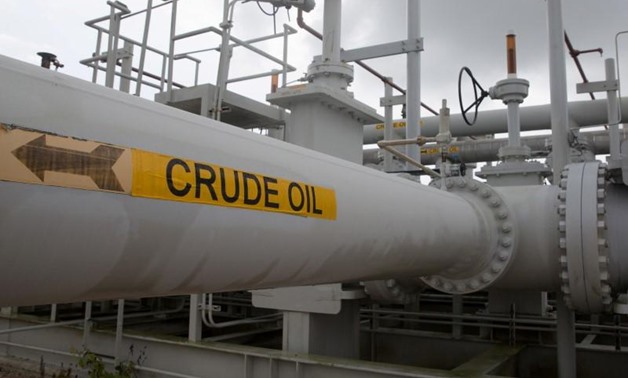
A maze of crude oil pipes and valves is pictured during a tour by the Department of Energy at the Strategic Petroleum Reserve in Freeport, Texas, U.S. June 9, 2016. REUTERS/Richard Carson
SINGAPORE - 10 December 2018: Brent crude oil futures rose on Monday after producer club OPEC and some non-affiliated suppliers last Friday agreed to a supply cut from January.
Despite this, the price outlook for next year remains muted on the back of an economic slowdown.
International Brent crude oil futures were at $62.03 per barrel at 0748 GMT, up 36 cents, or 0.6 percent, from their last close.
Prices surged after the Organization of the Petroleum Exporting Countries (OPEC) and some non-OPEC producers including heavyweight Russia on Friday said they would cut oil supply by 1.2 million barrels per day (bpd), with an 800,000-bpd reduction planned by OPEC members and 400,000 bpd by countries not affiliated with the group.
The shutdown of the 315,000-bpd El Sharara oilfield in Libya also helped push up Brent, traders said.
U.S. West Texas Intermediate (WTI) crude futures were weaker, however, dropping 10 cents from their last settlement to $52.51 per barrel, weighed down by surging U.S. output as the booming American oil industry is not taking part in the announced cuts.
“The surge in U.S. supply in recent months should be a reason for caution,” Bank of America Merrill Lynch said in a note on Monday.
The OPEC-led supply curbs will be made from January, measured against October 2018 output levels.
U.S. bank Morgan Stanley said the cut was “likely sufficient to balance the market in 1H19 and prevent inventories from building”.
It added that it expected “Brent to reach $67.5 per barrel by 2Q19, down from $77.5 before.”
Bank of America said the reduction “should lead to a relatively balanced global oil market and will likely push Brent and WTI prices back to our respective expected averages of $70 per barrel and $59 per barrel in 2019.”
Not all analysts were so confident.
Edward Bell of Emirates NBD bank said “the scale of the cuts ... isn’t enough to push the market back into deficit” and that he expected “a market surplus of around 1.2 million bpd in Q1 with the new production levels”.
Oil prices have fallen sharply since October on signs of an economic slowdown, with Brent losing almost 30 percent in value.
Japan, the world’s No.4 oil consumer, on Monday revised its third quarter GDP growth down to an annualized rate of minus 2.5 percent, down from the initial estimate of minus 1.2 percent.
Meanwhile, the two world’s biggest economies - the United States and China - are locked in a trade war which is threatening to slow global growth and battering investor sentiment.
Despite the expectations of a slowdown, demand on the ground remains healthy.
China, the world’s biggest oil importer, over the weekend reported November crude imports rose 8.5 percent from a year ago, to 10.43 million bpd, marking the first time China imported more than 10 million bpd. That leaves the world’s second-biggest economy on track to set yet another annual import record.
Demand is driven by Chinese purchases for strategic reserves, but also by new refineries, triggering excess supply of fuels, filling up storage tanks and eroding refinery profits across Asia.


Comments
Leave a Comment